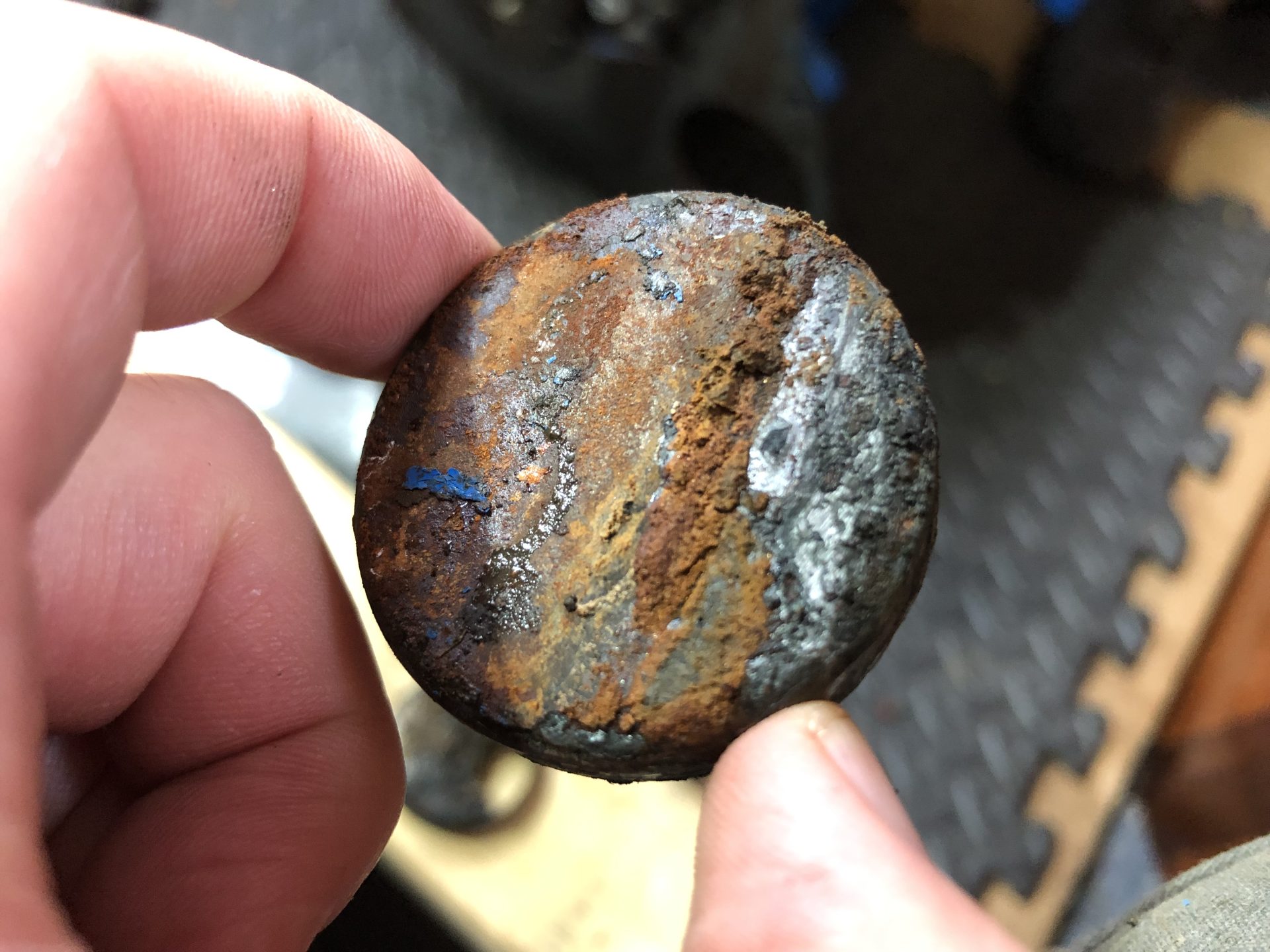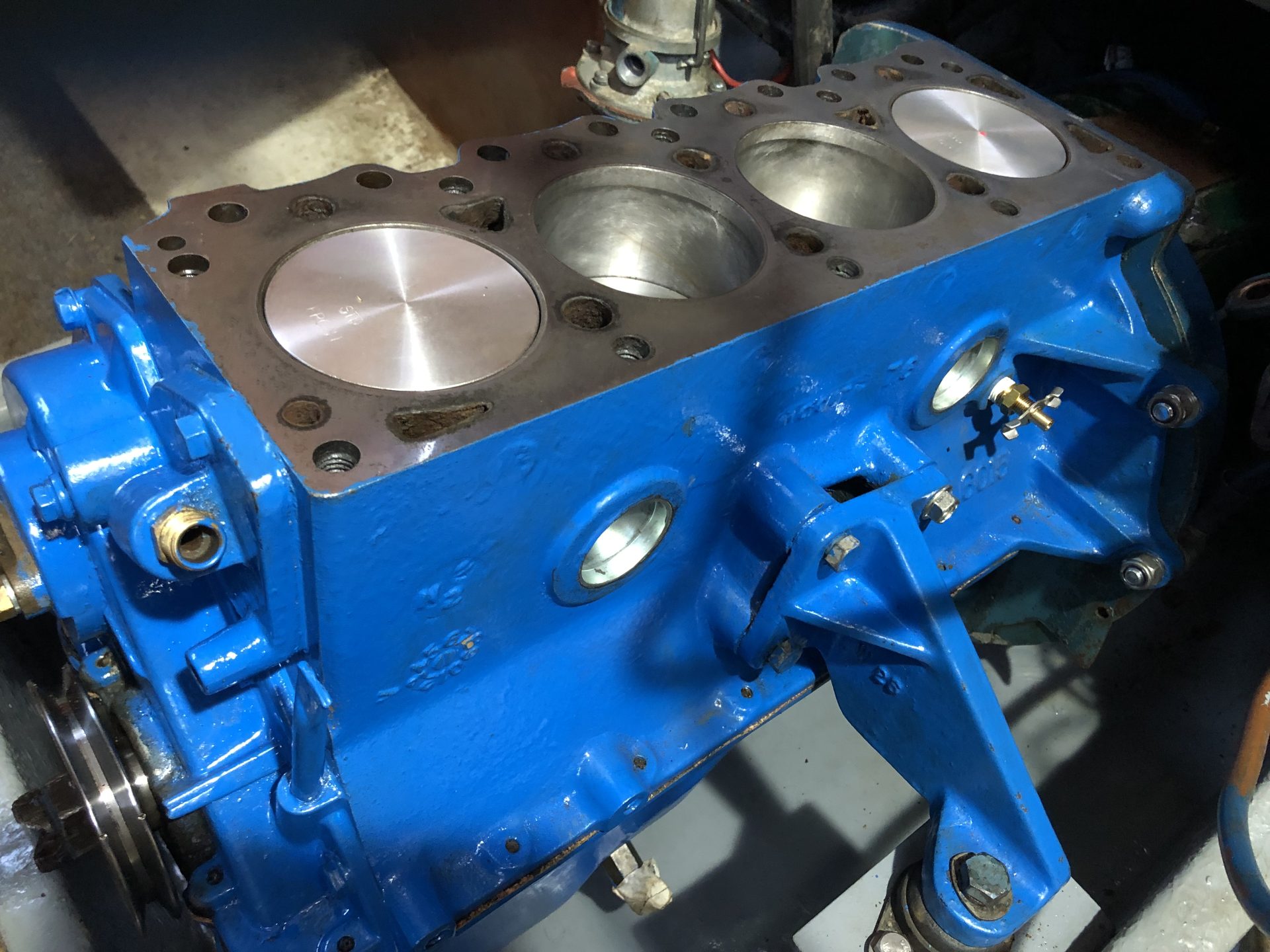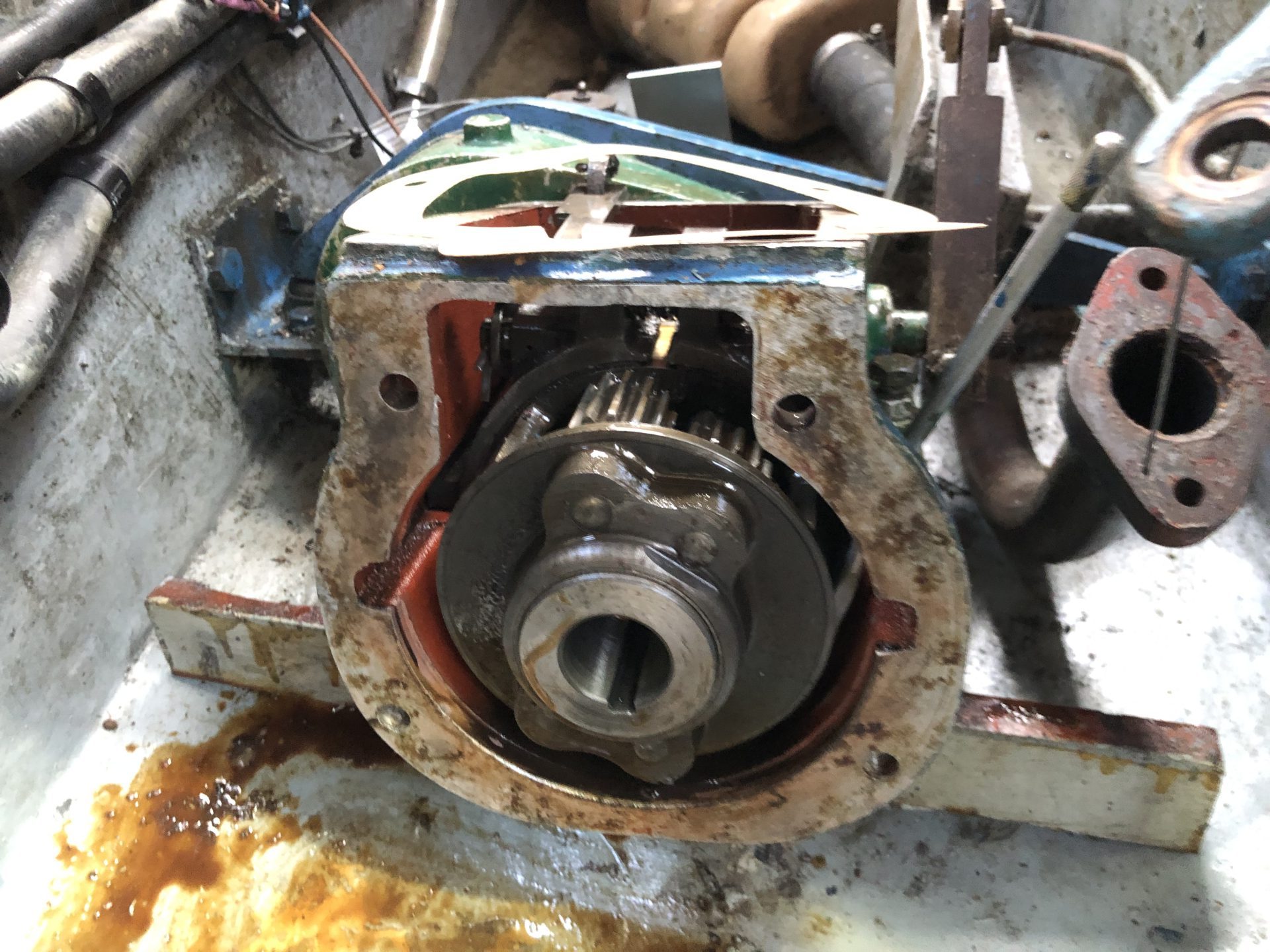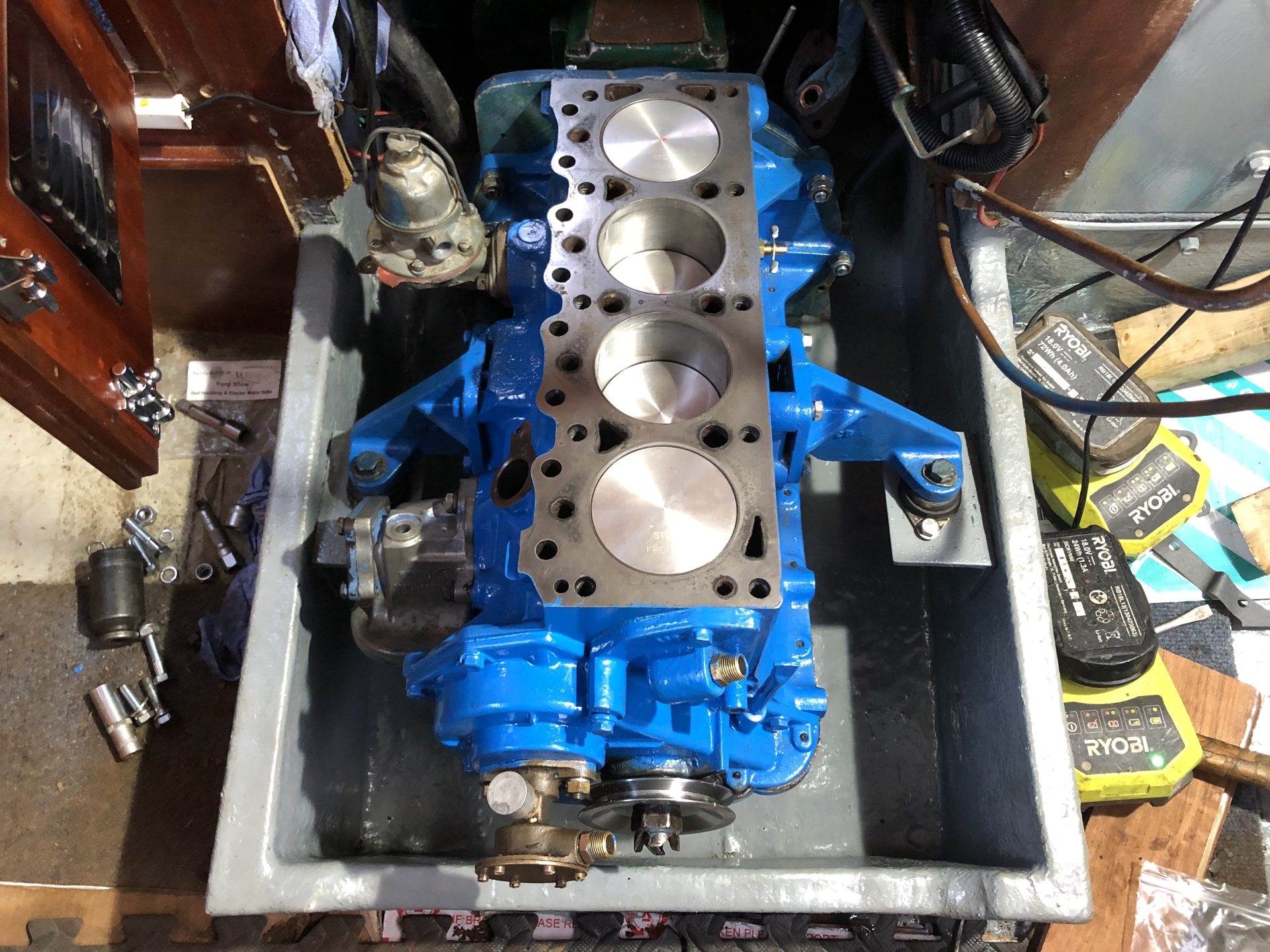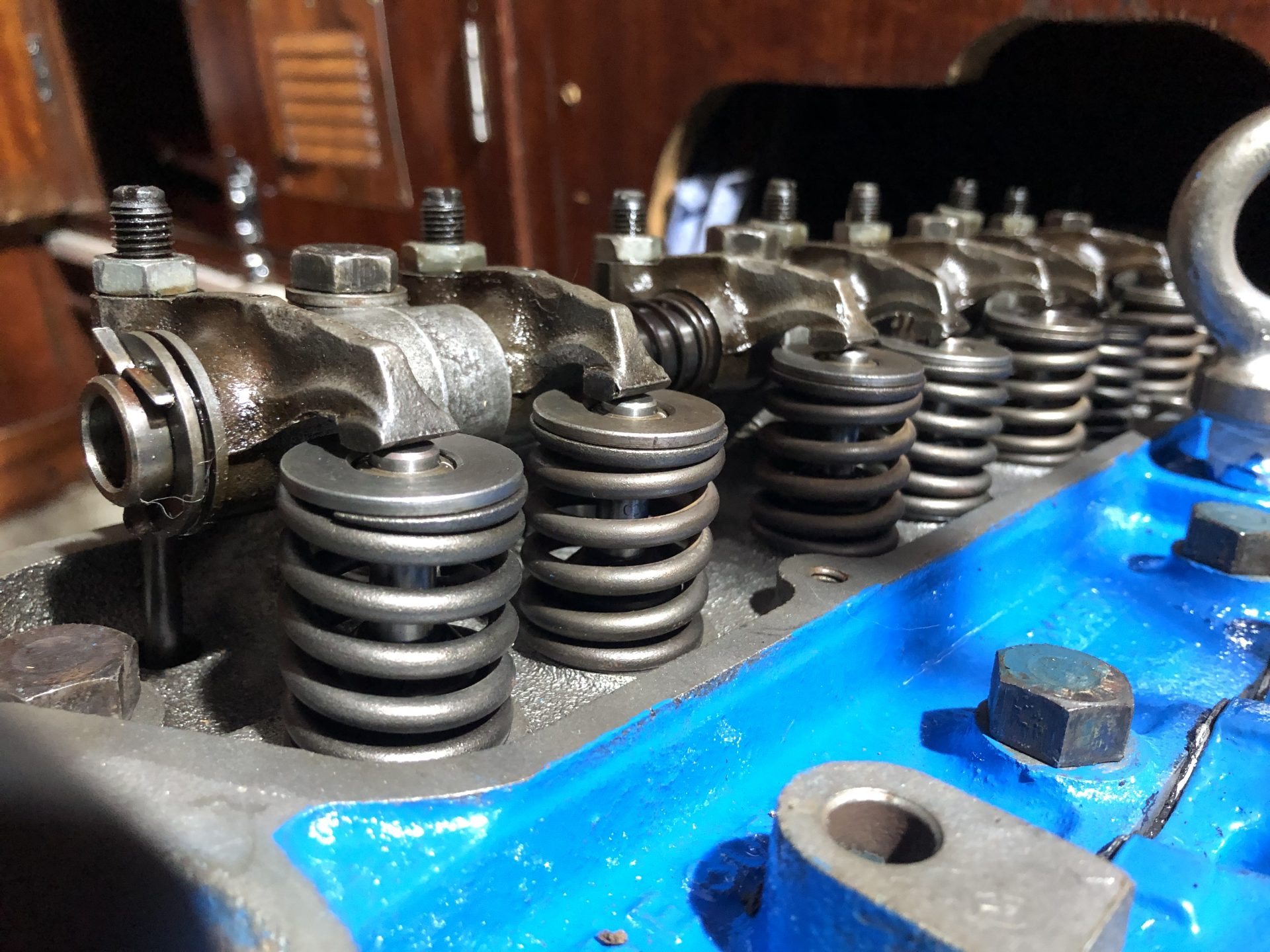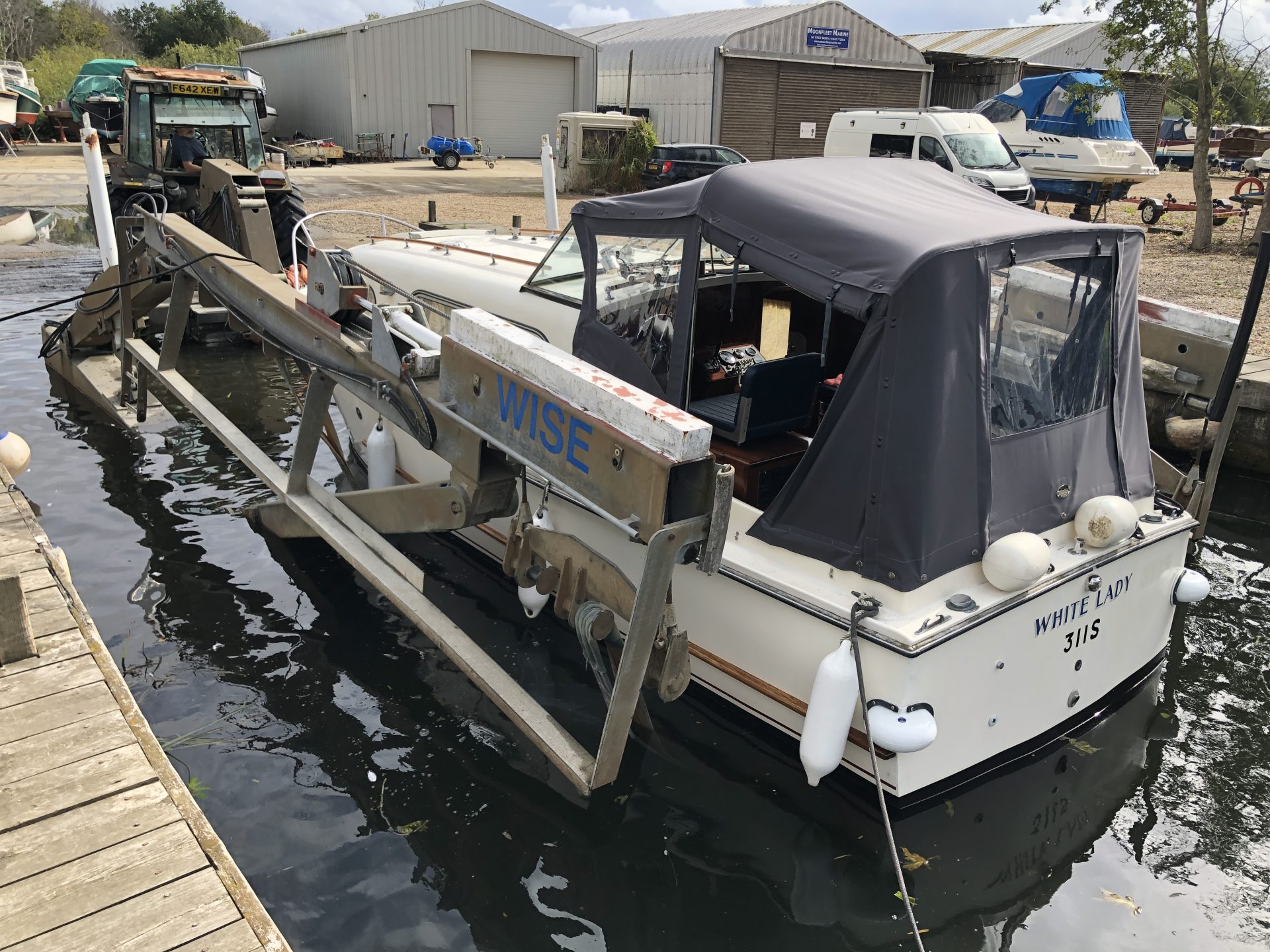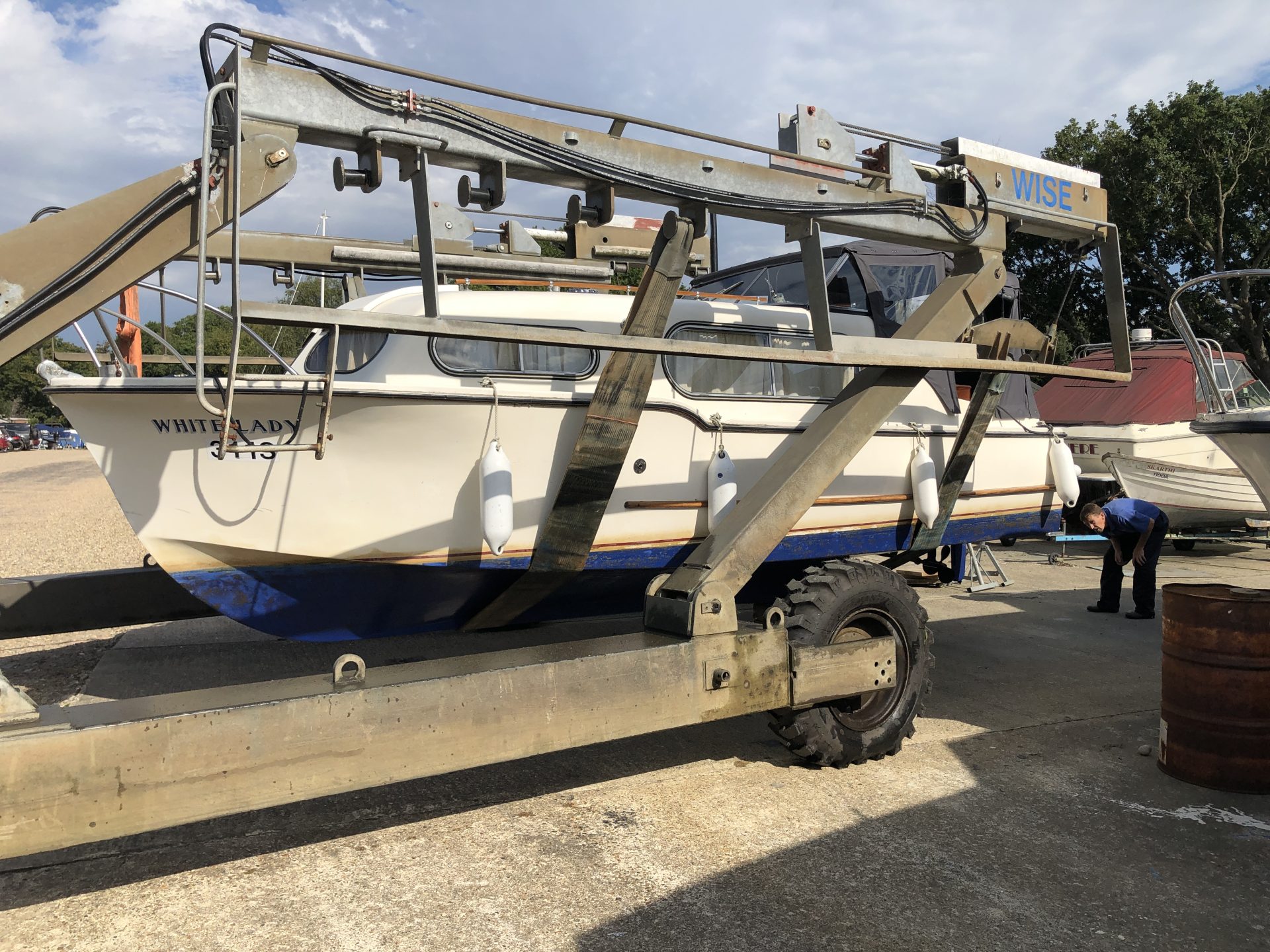by chris
Share
Having overcome the piston and big-end bearing issues, the stalled engine re-build could continue.
The final assembly of the engine bottom end came together with only minor difficulties such as having to hammer in the rope rear crank oil seals which have made turning the engine over quite stiff. I'm sure this will loosen up quickly enough however.
As the flywheel was off, it made sense to replace the core plugs and it was a good job we didn't skip this part. The old core plugs looked quite new from the outside but were very close to failing. On removing the core plugs it became obvious the waterways were gunked up with muddy silt which would have been far easier to clean at an earlier stage of the re-build. Without access to an air line, as much muck was removed with small screwdrivers, blowers and anything else that might break it up. Hopefully flushing with fresh water will do the rest but the waterways are now pretty clear.
The next big challenge was getting the stub shaft bolted to the flywheel with less than two thousandths tolerance. With a bit of jiggling, twisting and many attempts, this tolerance was achieved with the help of a magnetic base dial test indicator measuring the furthest bearing surface on the shaft stub.
The shaft stub comes in two parts, the need for separation not being entirely obvious. It did however become obvious when trying to insert the partially assembled engine into the gearbox, bellhousing and through the primitive leather surfaced gearbox oil seal (which was pretty expensive!). I turns out that you would insert the cog part of the shaft stub onto the gearbox entry, then fit the gearbox oil seal and then marry up the engine with the shorter stub shaft. As the previous gearbox oil seal was completely worn out, the entire assembly came out in one, which it shouldn't have. To solve the problem, we had to remove the bell housing and then inset the cog half of the stub shaft assembly into the gearbox, then replace the bell housing with the immovable new front gearbox oil seal and then pull up the engine. We got there in the end and managed to save a £60 oil seal in the process.
Assembling the inlet and exhaust manifolds was far easier with the head removed from the engine. Much of the Watermota engineering took little or no consideration of requiring access for spanners and so on, so of course many of the previous nuts and bolts had been rounded off in the struggle.
A solid tip is to have an extensive set of spare bolts in both UNC, UNF and Metric as you'll encounter most of them and will need to replace most of them due to Watermota machining not taking the need to use spanners into consideration and you rounding them off.
Fitting the head came with it's own surprises with the cam fixing bolts 'grinding' on their way in. Despite the head being nicely machined, grinding paste residue still remained in some of the bolt holes which needed to be carefully cleaned out before trying again.
All that remained having fitted most of the ancillaries such as oil pump/filter, fuel pump, alternator etc was the carburettor. This hit us with hopefully the final challenge of the re-build. The fuel pipe fitting going in to the carb body had been stripped out and bodged with chemical metal by a previous owner. In my mind, the one thing you don't mess around with or take lightly with an inboard engine is anything on the fuel side. Also, the Freeman throttle linkage is a properly Heath Robinson affair, hanging partially in free-space and certainly not aligning with the rotational axis of the carburettor throttle stem.
This is something that I hope to address having sourced a second hand 'donor' carb to deal with the stripped thread issue. That will most likely be the next instalment of this technical blog.
Muddy silt discovered in the engine block waterways having removed the old core plugs
Cog section of the stub shaft inserted into the gearbox having removed the bell housing
The engine now in place on it's engine mounts, fixed to the re-assembled gearbox
The head goes on
The engine mostly re-assembled except for the carburettor which has a stripped fuel pipe fitting


